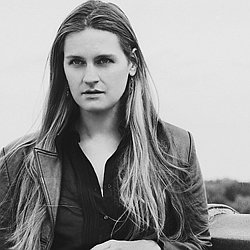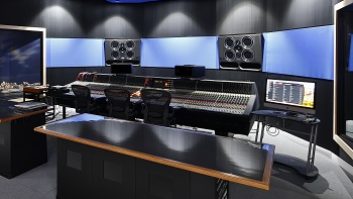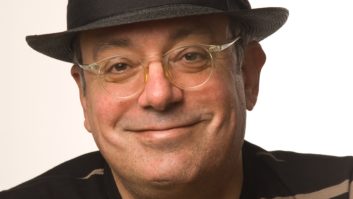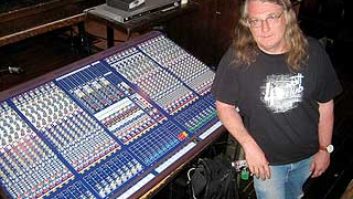
Photo: David Bartolomi
She will never completely escape the Billie Holiday comparisons. She will still have her albums categorized as “jazz” despite a multitude of compelling evidence to the contrary. Madeleine Peyroux’s large and devoted fan base doesn’t see stylistic limitations, but rather appreciates the tremendous breadth of her repertoire, which seamlessly incorporates pop standards, deep blues, country, folk, French classics, distinctive and imaginative takes on songs by some of the great writers of the modern era, and, increasingly in the past few years, her own songs, which span many of those genres.
Peyroux’s latest effort, Standin’ on the Rooftop—just her fifth full-length album since her stunning 1996 debut, Dreamland—should surprise and delight her longtime followers, and may also have enough creative twists and wrinkles to attract new listeners. After three albums working with producer/bassist Larry Klein and his fine stable of L.A. players, Peyroux enlisted Craig Street (well known for his extraordinary work with such singers as Cassandra Wilson, MeShell Ndegeocello, k.d. lang, Norah Jones and John Legend) and a handful of that producer’s favorite musicians to cut the new disc entirely in New York City, tracking primarily at Sear Sound. (The album comes out June 7 on the Decca label.) Peyroux’s previous album, Bare Bones (2009), consisted of songs written or co-written by Peyroux and various others (Klein, Walter Becker, Julian Coryell, et al). Standin’ on the Rooftop finds Peyroux once again writing most of the songs, but there are also three covers: The Beatles’ “Martha, My Dear,” Robert Johnson’s “Love in Vain” and Dylan’s lovely “I Threw It All Away.”
According to Street, people had been suggesting that he and Peyroux work together for some time, and the two first got together three years ago at a diner in upstate New York. “We hung out for a while, and then we went in her pickup truck and she played me some demos she’d been working on with her sister that were just amazing. She ended up making another record with Larry [Bare Bones], but we stayed in touch, and every few months, I’d say, ‘You know, if you ever want to make a record with me.’ Then, toward the end of [2010], it coincided with when she wanted to make a new record.” Did Street go back and listen to Peyroux’s earlier albums to chart a course forward? “No. I was aware of her first album and I’d heard some other things and I’d seen her play live, but I almost never listen to what anybody’s done before I work with them. I’m listening for what somebody tells me they want to do; that’s what I look for.”
Adds Peyroux, “I really loved the songwriting I was doing last year and I was very excited about it. I got to a place where I had a handful of songs I really liked and was ready to record—not enough for a full record yet. But I had some specific desires, such as I wanted it to be in New York City. I also wanted the experience of working with another producer. Larry and I talked about it and he was aware of what was going on. I wanted to see what it would be like. Craig and I started talking a lot about the songs and possible directions and about all these other things—records we loved, sounds we loved—and things moved on from there.”
Both were surprised to learn that they shared a love for early ’70s soul music, such as Charles Wright’s Watts 103rd Street Rhythm Band, Bill Withers, Stevie Wonder and, most of all, Sly Stone’s groundbreaking There’s a Riot Goin’ On album. “I’d never heard any of that get referenced in her work, even in a subtle way,” Street says with a chuckle. “I wouldn’t have guessed she was really into funk rhythm guitar, wah-wah pedals, James Brown or Sly. But she is!”
“The fact that Sly Stone became a big part of our discussions and the approach to some of this record is pretty far out of the box I’m comfortable in,” Peyroux acknowledges. “I idolize the way Sly approached the song. Hearing him do ‘Que Sera, Sera,’ it’s not actually that far away from the world of song that I live in. So he became a bible reference when we were deciding to go for something that was halfway between a very ethereal, dreamy world and the complete opposite of that: There’s a part you recognize, there’s a melody you recognize, there’s an obvious rhythm that you can dance to. That’s where Craig and I settled: What’s in between those two extremes?
“On one song, ‘Standin’ on the Rooftop,’ I even take advantage of more modern classical music, like Steve Reich. And on the other hand, I’ve got some funky tunes that could go in any direction on the R&B side. I’m coming out of the blues and jazz idiom basically, so I stretched myself in terms of what sounds and approaches we used. As far as the singing, I think I did what I normally do, which is trying to focus on the lyric and make a dramatic delivery of the story.”
Peyroux worked up guitar-and-voice demos of the new songs using GarageBand and her laptop at home, but also, “I tried to experiment with some sounds to give Craig an idea of what kind of production I was thinking of. I might try something with the MIDI keyboard and put on a pass of strings or pads, or do some effected whirly sounds. For instance, I was aware that I was going to be looking for a really big low-end bass drum sound, and we talked about [drummer] Charley Drayton and I tried to make a little demo that enunciated some of those percussive sounds on one of those songs. Apparently, Craig sent it off to Charley and Charley said he liked it—these terrible, funky demos.” [Laughs]
In addition to Drayton, the small core band for the tracking sessions included guitarists Marc Ribot and Chris Bruce, bassist Ndegeocello and (for two days) keyboardist John Kirby, all veterans of other Street projects. Street says, “Chris came into town a few days before the sessions, and he and Madeleine and I sat down in her apartment and went over the structure of songs, and we double-checked things for keys. Everybody else we sent the guitar-vocal demos so they could get a sense of what the song structures were like. The keys might have changed here and there, or the tempos, but the actual structure didn’t.” Street’s M.O., though, is never to suggest parts, but “allow the musicians to be who they are. They’re all amazing players and they worked so well as a group, which gave Madeleine the freedom to experiment. It’s critical when someone’s working outside of their perceived norm that their collaborators are generous, open and kind.”
The sessions took place in Sear Sound’s Studio A, which, in the post-Walter Sear era (he died in April 2010), is still a magnificent recording space and repository for some of the finest equipment ever built. “It’s a really comfortable place to work,” Street says. “You know you’re in a studio, but it doesn’t feel like a sterile, shiny studio. Everything was cut live. We cut 14 songs in four days. On average we would do a song every two or three hours—that was having a refresher listen to the demo, maybe having a rough discussion of what we might do, but essentially just playing. There would be a period of experimentation and something would form out of that. We usually did a few takes and then we would do the primary overdubs at the time. We were looking to capture performances. When it feels great, you go for it and you commit to it.”
The sessions were engineered by Matthew Cullen, formerly of Allaire Studios in upstate New York, where Street often worked before that studio closed a few years ago. They put Peyroux and her guitar in an iso booth, Drayton’s drums isolated in another, and then guitarists Bruce and Ribot and bassist Ndegeocello in the larger part of the main room, with baffles between them but still with quite a bit of bleed. Recording was to Pro Tools HD through the room’s custom Neve 8038 console. “I used very little reverb or EQ,” Cullen comments, “in fact, not much in the way of processing. Everything is pretty much as it went down—there’s a little delay on the vocal, but all the guitar sounds are amp sounds or pedals.”
For the guitarists’ amps, Cullen used a Coles ribbon mic and an AKG 451: “I like the Coles for its ‘wooliness’ and the 451 because it’s really bright and gives a lot of low end at the same time.” Bass was recorded direct and occasionally augmented by re-amping the signal through a B-15. For Drayton’s kit (which included a huge vintage bass drum he found in the basement of Radio City Music Hall), Cullen used a pair of Coles ribbons and a Neumann U47 between them for overheads, an AKG D 12 on the kick, a Shure 57 on the snare, a Sennheiser 441 “as a kit mic over the bass drum, pointing down at the snare,” and Sennheiser 421s on the toms.
Peyroux’s vocal mic on most tracks was a Neumann 67, with a Sony C-37A and a Cloud JRS-34 ribbon mic on a couple of tunes, at times with a Pultec or one of Street’s Tim de Paravicini–designed EAR valve preamps.
Although many of the overdubs were done on the spot, and what we hear on the finished album are complete performances with no editing between takes, there was some minor additional instrumental and vocal work done subsequently in four smaller New York–area rooms: Mother Brain, Vel Records, Downtown and Wild Arctic. There were also additional keyboards by Glenn Patscha in New York and Patrick Warren in L.A. The mixes were split among three engineers: Cullen, Tony Maserati and Kevin Killen. None strayed too far from what was on the tracks, with the great unifying element being Peyroux’s evocative and soulful vocals.
“This record has been a different process all around,” Peyroux says, “and it’s not just the musicians and the producer. It’s the songs. There’s a little bit more of a rock influence and an R&B influence. I don’t feel like I’m boxed into a jazz setting with the material, and on top of that I think we really explored a different type of band sound underneath the songs. I wanted to see how far I could push things out of the box that I’ve become comfortable living in.”






